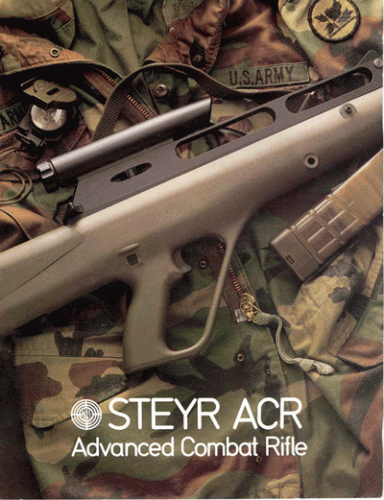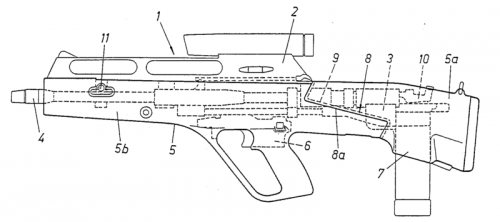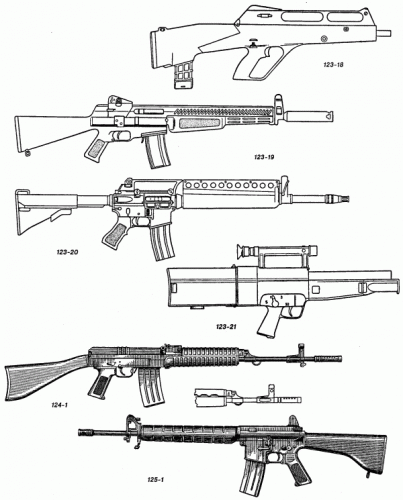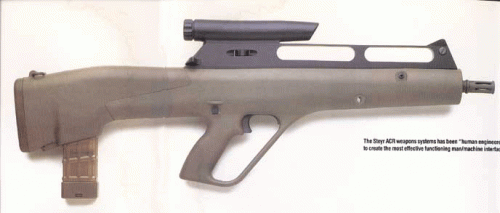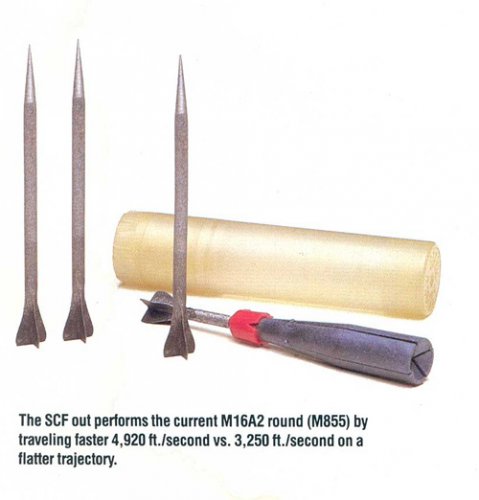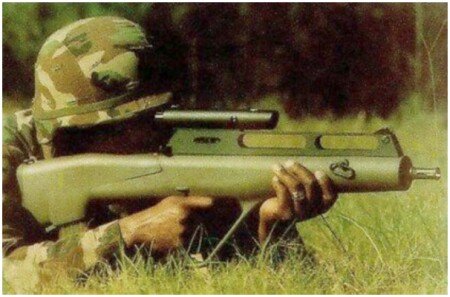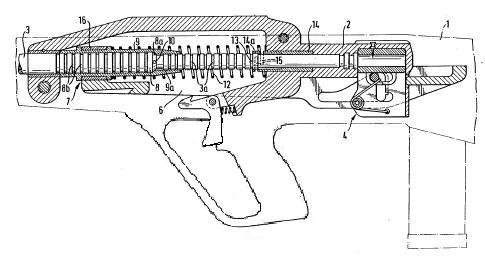The Steyr ACR (Advanced Combat Rifle) was a prototype flechette-firing assault rifle built for the US Army's Advanced Combat Rifle program of 1989/90. Although the Steyr design proved effective, as did most of the weapons submitted, the entire ACR program ended with none of the entrants achieving performance 100% better than the M16A2, the baseline for a successful ACR weapon. The Steyr ACR had a bullpup design like the Steyr AUG, which it slightly resembles.
http://en.wikipedia.org/wiki/Steyr_ACR
http://www.steyr-aug.com/acr2002.htm
http://world.guns.ru/assault/as56-e.htm
http://en.wikipedia.org/wiki/Advanced_Combat_Rifle
http://en.wikipedia.org/wiki/Steyr_ACR
http://www.steyr-aug.com/acr2002.htm
http://world.guns.ru/assault/as56-e.htm
http://en.wikipedia.org/wiki/Advanced_Combat_Rifle

